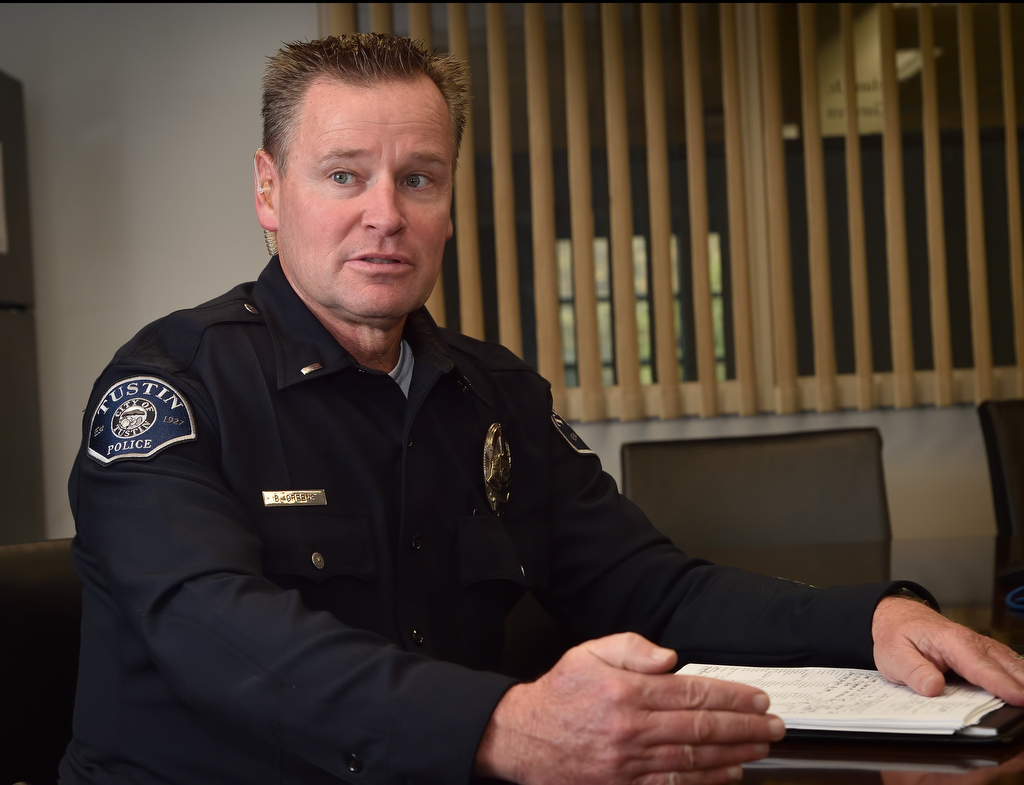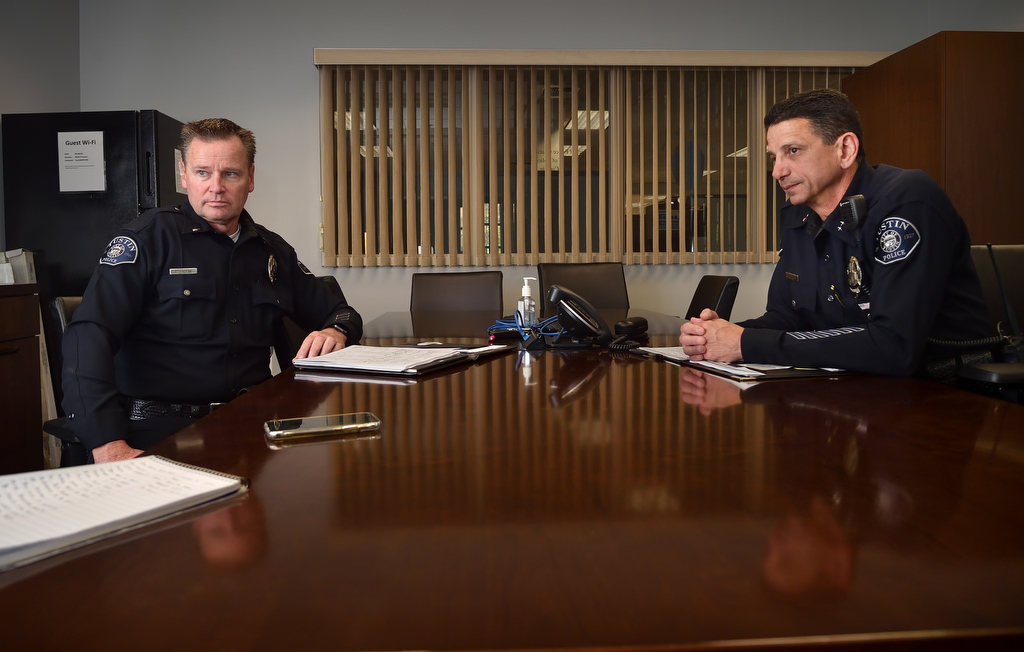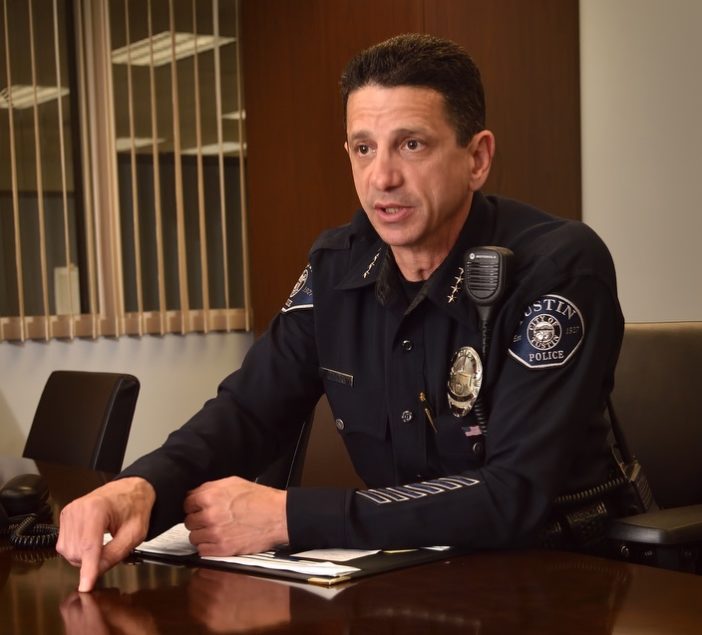The United States is fighting one of its most lethal drug crises.
While the United States makes up only five percent of the world’s population, its citizens consume approximately 80 percent of the world’s prescription opioid drugs.
Drug abuse killed more than 70,200 people in 2017 alone — that’s over 190 people a day and 68 percent of those deaths involved an opioid.
Drug abuse is so rampant that it’s beginning to seep into even the cleanest of neighborhoods.
“To put this in perspective, Tustin, in my opinion, is one the safer communities in the state,” Tustin Police Chief Stu Greenberg said. “This is a good community, but this problem is happening everywhere. It doesn’t choose a certain community and stay there.”
How bad has the issue become?
Take an incident that happened on April 2at the Tustin Police Department.
At 9:30 p.m. that Tuesday, after conducting a bike stop, Tustin police officers arrested 48-year-old Santa Ana resident Justin Stephens for possession of false identity, drug paraphernalia, and heroin.
Stephens was booked into the Orange County Jail and was released on April 17. He returned to the Tustin Police Department to gather his belongings that night.
After checking in with the front desk, he made his way into the restroom inside the department lobby.

The public restroom, right, in the lobby of the Tustin Police Department where someone walked in and overdosed on illegal drugs.
Photo by Steven Georges/Behind the Badge
However, an officer working the front desk could immediately tell that something was not right.
The officer became suspicious when he noticed the sound of the toilet being flushed multiple times and became worried when Stephens did not exit the restroom after 45 minutes.
The officer ran a quick check on Stephens and discovered he was on parole.
“The officer was fearful that maybe he was using drugs and passed out or something to that effect, so the officer went to do a welfare check,” Lieutenant Brian Greene said.
The officer knocked on the restroom door and told Stephens that he needed to leave.
Stephens delayed and flushed the toilet a few more times before finally exiting the restroom, which made the officer more suspicious.
Following his intuition, the officer conducted a parole search and found Stephens to yet again be in possession of drug paraphernalia and heroin, this time inside the Tustin Police Department.
“It’s absolutely crazy how desperate you have to be to walk into our police department with drugs,” Greenberg said.
Due to Proposition 47, which voters approved in 2014, the officers could not place Stephens in custody for possession of heroin alone.
If it wasn’t for a parole violation, Stephens would have only been cited and released for the incident, Greenberg said. Because Stephens was on parole, officers were able to arrest him.

TPD Lt. Brian Greene talks about the drug overdose that occurred in the police lobby restroom.
Photo by Steven Georges/Behind the Badge
“He told an officer that he needs help, but the system just keeps putting him back on the street where he becomes transient and adds to the homeless population,” Greenberg said. “He’s not getting the help he needs, which continues the cycle of drug addiction and if you have homeless and drug addiction together, you’re almost certainly going to get mental health issues.”
Proposition 47 was created with intentions to alleviate jail and prison overcrowding by lowering sentencing for nonviolent crimes.
For example, the proposition made felony for mere possession into a misdemeanor.
“It was dubbed the Safe Neighborhoods and School Act and it was anything but that,” Greenberg said. “In my opinion, it significantly contributed to the problems we’re seeing on the streets and throughout the state.”
Making sentencing changes like this makes a police officer’s job seem counter-productive at times.
“As an officer, one of the greatest things about this profession is being able to help people, but now you arrest somebody, you bring them to the station, you give them a ticket, and they go right back out on the street instead of booking them into the jail which provided a break the cycle of drug abuse? I have got to believe it’s discouraging for officers,” Greene said.
Although officers can no longer book drug abusers into jail for drug possession, they can still save their lives.
Officers are trained to use naloxone inhalers, which they carry with them on every shift. Officers use the inhalers a couple of times a month, Greene said.
“Naloxone can reverse the effects of narcotics like heroin or fentanyl,” Greene said. “So when officers run into situations where somebody has overdosed, they are able to administer that and hopefully reverse those effects and potentially save their life.”
On the other hand, while police officers are busy saving lives, cartels are busy hooking their users.
Greenberg was testifying to support a bill that would enhance prison sentences for major drug traffickers of fentanyl at the public safety subcommittee in Sacramento when a member asked him a common question:
“Someone asked, ‘if people are dying, why do these cartels sell it to them? Don’t they care they are killing their customers?’ ” Greenberg said. “It shocked me that he didn’t understand the significance of the issue; the answer is simple, they don’t care. People dying on an overdose? That’s just collateral damage because for every person they are killing with an overdose, they are hooking 10 or 20 more, whatever that number is.”
Potent drugs like fentanyl don’t just pose a deadly threat to their users but to officers as well.
“Mere exposure through the air or skin can be deadly and we’ve seen a significant rise of deaths related to fentanyl as a result,” Greenberg said. “This epidemic is not only growing, but it’s also getting more and more dangerous for officers… Officers were hospitalized as a result of fentanyl exposure, just doing their jobs.”

TPD Lt. Brian Greene, left, and Tustin Police Chief Stu Greenberg talk about the drug overdose that occurred in the police lobby restroom.
Photo by Steven Georges/Behind the Badge
Overdoses don’t discriminate by age; opioid abuse is affecting youths as well.
“You see the news and a lot of young kids taking drugs, becoming addicted, and losing their life as a result,” Greene said.
When drug abuse becomes out of control, crimes of opportunity begin to rise.
Crimes of opportunity include burglaries, auto thefts, and thefts from vehicles. Drug users often commit these crimes in order to fund their habit.
“They prey on wonderful communities like what we have in Tustin because it’s safe and people feel comfortable so they leave their items in their vehicles and as a result, they get stolen,” Greene said.
Just because a person does not have drug abuse issues within their family, that doesn’t mean the epidemic won’t affect them or their loved ones.
If a user is driving under the influence of drugs (DUID) and gets into a car accident, they can severely hurt or even kill innocent family members or friends, Greenberg said.
“Enforcement has to go hand in hand with treatment, rehab, therapy, and all the other services that we’re trying to provide,” Greenberg said. “Until we interrupt that cycle, we’re going to see more homeless people, addiction problems, mental health issues, and we’re going to see more overdose deaths until we get a grasp on this.”
 Behind the Badge
Behind the Badge



